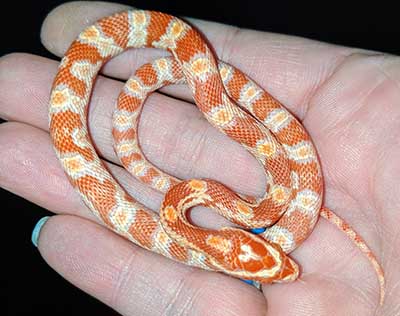
Are you afraid of snakes? Many people are not fans. I keep a snake in my classroom named Crawly, who is a little harmless corn snake who serves as my snake ambassador. Many of my students have learned to love Crawly!
Is there a scientific reason for the our fear of snakes? Some scientists believe that evolution has lead to humans being more aware of snakes than other creatures. This is likely due to the fact that snakes have always posed a threat to primates, so being able to see them quickly would have been an advantage.
In this exercise, students examine data on the reaction times of human subjects. The subjects are shown pictures of fruit that include one of three target images: a snake, a mushroom, or a spider. Then, the subjects are timed, on how long it takes for them to see the target. In most of the trials, humans were much quicker to notice the snake than the other targets.
The original experiment and data can be viewed at PLOS ONE, where the study is titled: “The Hidden Snake in the Grass: Superior Detection of Snakes in Challenging Attentional Conditions.” That’s a lot of words for a simple test. The test has been repeated in other forms, you can also so your students this video which explores the “Snake Detection Hypothesis.”

In the worksheet, students look at the graph and answer basic questions, such as how long it took for subjects to detect the snake in the image. Then, they complete a CER: Claim – Evidence – Reasoning, that summarizes the findings of the study.
The worksheet easily fits into a unit on animals or within an evolution unit. It’s also a good conversation starter on animal behavior and fear response. Of course, it’s a bonus if you have your own snake ambassador in the classroom.
If you want more resources on snakes, check out this activity that explores how snakes may have evolved from lizards. Why did snakes lose their limbs?

